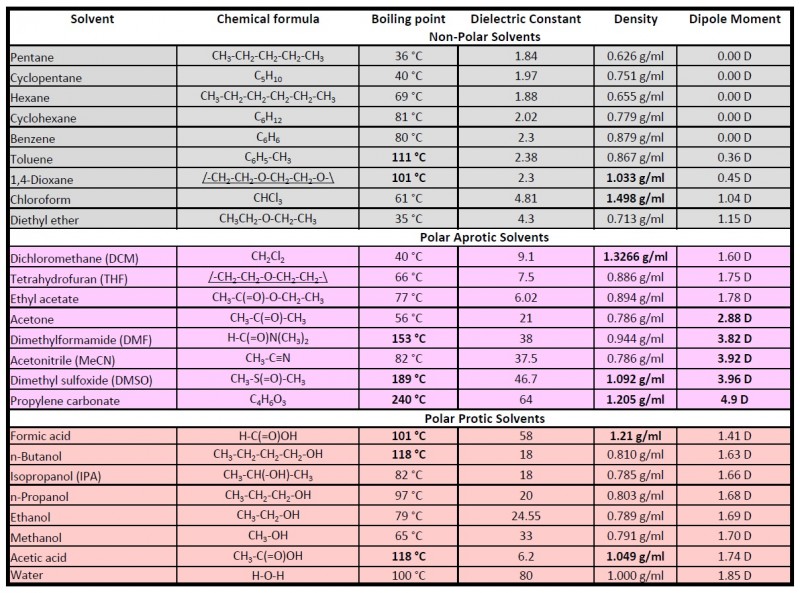Solvents are a bit difficult to understand for a number of reasons. Even for someone who has worked with solvents as much as I have, the permutations of solvents, their combinations and their capabilities are bewildering. But, let’s start with the simple stuff.
A solvent dissolves what is called a solute. In what is probably the most used simple example, salt (solute) is dissolved in water (solvent). Although we usually think of solvents as being liquids, there are cases of both gasses and solids which act as solvents. Likewise, solutes although we commonly think of them as solids or liquids can also be gasses. The salt dissolving in water example makes it all sound very simple, doesn’t it? Well, hang on for a wild ride because that is only the beginning!
When a solvent dissolves a solute, something called a “mixture” is formed. But this particular mixture consisting of a solute dissolved by a solvent is a special type of mixture called a solution. A solution has certain characteristics which distinguish it from a mixture. Mixtures that are not solutions are much different. For now, we will only concern ourselves with mixtures that are solutions and leave mixtures for later.
In a solution, the two components exist in a homogenious state. In somewhat simpler terms again using water and salt as examples, the ratio of salt and water in the solution is the same no matter where you look. Solutions also can not be separated by filtration although, in some cases, some gravity separation may occur over long periods of time. Another characteristic of a solution is that clear liquid solutions will not diffuse a beam of light passing through them. One can not see that water has salt dissolved in it. Although all of the above has been based on liquids, the same or similar rules apply for cases involving gasses and solids.
Terms – Solubility Limit
In most cases there is a limit to how much of something can be dissolved in a liquid. In our salt and water example, if you keep adding salt, you will finally reach a point where the added salt remains as granuals and does not dissolve. At that point, the “solubility limit” has been reached. The solution is “saturated.” Once the solvent has dissolved all of a material that it can, it is no longer a solvent for that material. The solubility limit, though, typically increases as temperature increases. Increasing the temperature of a salt/water solution will allow more salt to be dissolved by raising the sautration limit. However, even a saturated solution may still be a solvent for another material. A saturated salt solution may still dissolve a quantity of alcohol (liquid) for example.
Terms – Miscible
Solvents and solutes that mix in any ratio (and therefore have no solubility limit) are said to be “miscible.” Any amount of Vodka, for example can be mixed with any amount of water to form a mixture that is a solution. Technically, once you pass the 50% point the solvent and solute change positions as the solvent is usually the material that there is more of.
Terms – Non-Polar and Polar
The final thought for this blog will be that solvents and solutes can be Non-Polar, Polar Protic or Polar Aprotic. The following scale with solvents listed by polarity can be used to determine which solvents and solutes will form a solution. The closer together two materials are, the more soluble they will be in one another.

We will move away from Chemistry for the next couple of blogs but will get back to it in the near future.
FJF



 English
English Spanish
Spanish Chinese
Chinese Canada
Canada Mexico
Mexico United Kingdom
United Kingdom



